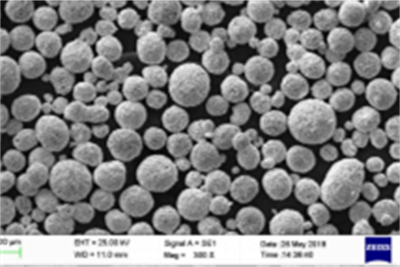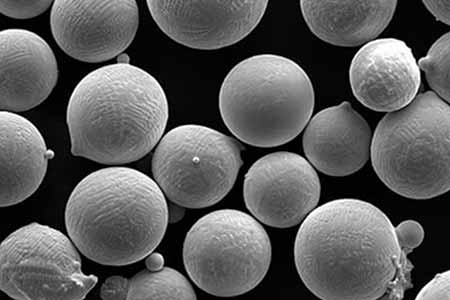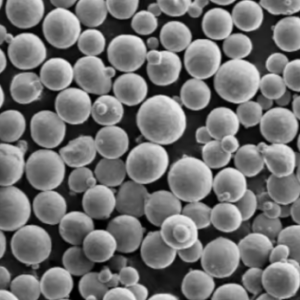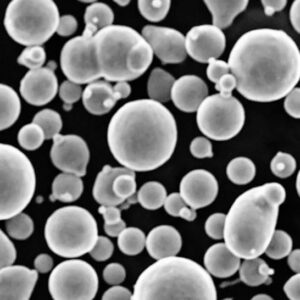概要
について 発散型適応生産システム(DAPS) は、先進技術を活用して生産工程を最適化する、製造分野における画期的なアプローチである。このシステムは、さまざまな生産要件に適応し、効率性、柔軟性、持続可能性を高めます。革新的な方法論と最先端の素材を統合することで、DAPSは現代の製造業の課題に対する変革的なソリューションを提供します。
発散型適応生産システム(DAPS)とは何か?
DAPSは、生産需要、素材、市場環境の変化にダイナミックに対応できるように設計されています。従来の硬直した生産システムとは異なり、DAPSは柔軟性と適応性に基づいて構築されているため、メーカーは迅速にピボットし、多様なニーズに対応することができる。このシステムは、AI、IoT、ビッグデータ分析などのデジタル技術の組み合わせを活用し、リアルタイムでプロセスを監視・調整し、最適なパフォーマンスと最小限の無駄を保証します。
DAPSの主な特徴
- 適応力がある: 生産要件や材料の変更に容易に対応できます。
- 効率が良い: リアルタイムの調整により、資源の使用を最適化し、無駄を最小限に抑えます。
- 持続可能性: 環境に優しい手法や素材を取り入れ、環境への影響を低減。
- スケーラビリティ: 小規模および大規模生産のニーズに適しています。
- 統合だ: 既存の製造システムやプロセスとシームレスに統合。
DAPSにおける金属粉末
金属粉末はDAPS、特に積層造形や3Dプリンティング・アプリケーションにおいて重要な役割を果たしている。これらの粉末は、最終製品の品質と一貫性を確保するために、組成、粒子径、特性に関する特定の基準を満たす必要があります。

DAPSに使用される金属粉末の種類
| タイプ | 構成 | プロパティ | アプリケーション |
|---|---|---|---|
| チタン合金 | Ti-6Al-4V | 高強度、耐食性 | 航空宇宙、医療用インプラント |
| ステンレス鋼 | 316L、17-4 PH | 耐食性、耐久性 | 自動車、産業機器 |
| アルミニウム合金 | AlSi10Mg | 軽量、優れた機械的特性 | 航空宇宙、自動車、消費財 |
| ニッケル合金 | インコネル718、625 | 高温耐性 | タービンブレード、航空宇宙 |
| コバルト・クロム | CoCr | 耐摩耗性、生体適合性 | 医療用インプラント、歯科補綴物 |
| 銅合金 | CuCrZr | 高い導電性 | 電気部品、熱交換器 |
| 工具鋼 | H13, M2 | 硬度、耐摩耗性 | 金型、切削工具 |
| タングステン | W | 高密度、高融点 | 航空宇宙、防衛、電気接点 |
| ブロンズ | Cu-Sn合金 | 低摩擦、良好な摩耗特性 | ベアリング、ブッシュ、彫刻 |
| マグネシウム合金 | AZ91D, WE43 | 軽量、優れた対重量強度 | 自動車、航空宇宙、エレクトロニクス |
DAPSにおける金属粉末の用途
| 申し込み | 説明 |
|---|---|
| 航空宇宙 | 航空機・宇宙船用の軽量・高強度部品の製造 |
| 自動車 | 燃費と性能を向上させる耐久性のある軽量部品の製造 |
| 医療用インプラント | 生体適合性インプラントおよび補綴物の創製 |
| 産業機器 | さまざまな産業用途の堅牢な機械や工具の製造 |
| 消費財 | カスタマイズされた耐久消費財の開発 |
| 電気部品 | 電子機器用高導電性部品の製造 |
| ディフェンス | 軍事用高密度部品の製造 |
| 熱交換器 | 効率的な熱管理システムの構築 |
| 彫刻とアート | 複雑で耐久性のある芸術作品の製作 |
| 切削工具 | 高硬度耐摩耗工具の製造 |
DAPS用金属粉末の仕様
| タイプ | 粒子径 (μm) | 純度 (%) | 密度 (g/cm³) | 規格 |
|---|---|---|---|---|
| チタン合金 | 15-45 | >99.5 | 4.43 | アストマ F2924、アムス 4998 |
| ステンレス鋼 | 10-50 | >99.5 | 7.8 | アストレムA240、アストレムF138 |
| アルミニウム合金 | 20-60 | >99.8 | 2.7 | ASTM B209、ISO 3522 |
| ニッケル合金 | 15-45 | >99.5 | 8.44 | ASMB637、AMS5662 |
| コバルト・クロム | 10-50 | >99.5 | 8.3 | ASTM F75、ISO 5832-4 |
| 銅合金 | 15-60 | >99.9 | 8.96 | ASTM B152、EN 1652 |
| 工具鋼 | 20-50 | >99.5 | 7.8 | A681, ISO 4957 |
| タングステン | 10-45 | >99.9 | 19.3 | ASTM B777、MIL-T-21014 |
| ブロンズ | 20-80 | >99.8 | 8.8 | ASTM B584, EN 1982 |
| マグネシウム合金 | 20-60 | >99.9 | 1.74 | アストムB93、アムス4377 |
サプライヤーと価格詳細
| サプライヤー | 金属粉末の種類 | 価格帯 (kgあたり) | 所在地 | 連絡先 |
|---|---|---|---|---|
| ヘガネスAB | チタン、ステンレススチール | $200 – $400 | スウェーデン | ウェブサイト |
| GKNホエガネス | アルミニウム、ニッケル、コバルトクロム | $150 – $350 | アメリカ | ウェブサイト |
| LPWテクノロジー | 工具鋼, タングステン | $250 – $500 | 英国 | ウェブサイト |
| アルカムAB | チタン、アルミニウム | $180 – $380 | スウェーデン | ウェブサイト |
| カーペンター・パウダー | ニッケル、コバルトクロム | $220 – $450 | アメリカ | ウェブサイト |
| エーピーアンドシー | ステンレススチール、アルミニウム | $170 – $330 | カナダ | ウェブサイト |
| TLSテクニーク | 銅、ブロンズ | $140 – $300 | ドイツ | ウェブサイト |
| サンドビック | 工具鋼、ニッケル | $230 – $460 | スウェーデン | ウェブサイト |
| テクナ | チタン、ステンレススチール | $200 – $400 | カナダ | ウェブサイト |
| エラスティール | タングステン、工具鋼 | $240 – $470 | フランス | ウェブサイト |
DAPSにおける金属粉末の利点と欠点
| 金属粉タイプ | メリット | デメリット |
|---|---|---|
| チタン合金 | 高い強度対重量比、耐食性 | 高コスト、加工が難しい |
| ステンレス鋼 | 優れた耐食性、耐久性 | 密度が高く、加工が難しい |
| アルミニウム合金 | 軽量、良好な熱伝導性 | いくつかの合金に比べて強度が低い |
| ニッケル合金 | 高温耐性、良好な機械的特性 | 高価、入手可能なものが限られている |
| コバルト・クロム | 生体適合性、耐摩耗性 | 高コスト、加工が難しい |
| 銅合金 | 高い電気伝導性と熱伝導性 | 高密度、酸化されやすい |
| 工具鋼 | 高硬度、耐摩耗性 | コストが高く、機械加工が難しい |
| タングステン | 高密度、高融点 | コストが非常に高く、加工が難しい |
| ブロンズ | 良好な摩耗特性、低摩擦 | 一部の金属に比べて強度が低い |
| マグネシウム合金 | 軽量、優れた強度対重量比 | 引火性、耐食性低下 |
の特徴 発散型適応生産システム(DAPS)
適応性
DAPSの際立った特徴のひとつは、その適応性にある。静的な組立ラインというよりも、まるで生き物のような工場フロアを想像してみてほしい。カメレオンが異なる環境に溶け込むために色を変えるように、リアルタイムのデータに応じてオペレーションを調整することができる。この柔軟性は、ある日は航空宇宙部品を生産していても、次の日は自動車部品を生産していても、DAPSはシームレスにギアを切り替えることができることを意味します。
効率性
DAPSでは効率が命です。従来の製造システムは無駄が多く、必要のないときでもフル稼働することがよくありました。一方、DAPSは生産ラインのスマートサーモスタットのようなもので、現在のニーズに基づいてエネルギー使用と材料消費を最適化します。これにより、コストを削減するだけでなく、環境への影響も最小限に抑えることができ、Win-Winの関係を築くことができます。
スケーラビリティ
スケーラビリティはDAPSのもう一つの強みです。少量生産の新興企業であれ、大規模なオペレーションを行う既存メーカーであれ、DAPSはそれに応じてスケールアップやスケールダウンが可能です。ボリュームノブ付きの製造システムを持つようなもので、効率や品質を犠牲にすることなく、生産量をダイヤルアップまたはダイヤルダウンすることができます。
発散型適応生産システム(DAPS)の構成
DAPSの構成には、先進的なテクノロジーと素材が融合しており、それぞれがその機能性において重要な役割を担っている。以下は、その主な構成要素である:
DAPSに統合された技術
| テクノロジー | 機能 |
|---|---|
| 人工知能(AI) | リアルタイムの意思決定とプロセスの最適化 |
| モノのインターネット(IoT) | シームレスな通信のための機械とデバイスの接続 |
| ビッグデータ分析 | 生産効率を改善するための大規模なデータセットの分析 |
| アディティブ・マニュファクチャリング | 複雑なパーツを正確に、無駄なく製作 |
| ロボット工学 | 反復作業を自動化し、精度を高める |
| 拡張現実(AR) | 臨場感あふれる映像でメンテナンスとトレーニングをサポート |
DAPSの主要素材
| 素材 | プロパティ | DAPSにおける役割 |
|---|---|---|
| 金属粉 | 様々な組成と特性 | 積層造形プロセスで使用 |
| 複合材料 | 軽量、高強度 | 構造部品、軽量化 |
| スマート素材 | 環境の変化に対応する | 機械の適応コンポーネント |
| ナノ材料 | 機械的および電気的特性の向上 | 素材性能の向上 |
| 高性能ポリマー | 耐久性、柔軟性 | 断熱材、保護ケーシング |
発散型適応生産システム(DAPS)の利点
生産における柔軟性
手持ちの食材に関係なく、どんな料理でもすぐに作れるシェフを想像してみてください。それがDAPSの生産における柔軟性です。大きなダウンタイムや再構成なしに、異なる材料、デザイン、生産量に適応することができます。これは、市場の変化やカスタマイズされた注文に迅速に対応する必要がある業界にとって特に有益です。
コスト効率
DAPSはファイナンシャル・アドバイザーのようなもので、あらゆるドルを最大限に活用する手助けをします。資源の使用を最適化し、無駄を省くことで、生産コストを大幅に削減します。さらに、メンテナンスの必要性を予測し、故障を予防するシステムの能力により、修理費用や生産時間の損失を大幅に削減することができます。
製品品質の向上
製造業において品質は王であり、DAPSはこの領域で頂点に君臨している。生産工程を継続的に監視・調整することで、各製品が最高の品質基準を満たしていることを保証します。それはまるで、24時間365日、細心の品質管理検査官が勤務しているようなもので、問題になる前に潜在的な問題をキャッチする。
持続可能性
今日の環境意識の高い世界では、持続可能性は単なる流行語ではなく、必要不可欠なものです。DAPSは、環境に優しい慣行や素材をプロセスに取り入れることで、これを受け入れています。それは、製造の世界で緑の親指を持つようなものであり、持続可能な成長を育み、二酸化炭素排出量を削減します。
発散型適応生産システム(DAPS)の課題と限界
高いイニシャルコスト
DAPSの導入は高級車の購入に似ている。高度な機械、ソフトウエア、トレーニングなど、初期投資は相当なものになる。しかし、高級車のように、長期的な利益とコスト削減は、多くの場合、先行投資を正当化する。
複雑さ
DAPSは洗練されたシステムであり、洗練されたシステムには複雑さが伴います。このような高度な設定を管理・維持するには、専門的な知識とスキルが必要です。それは高度な航空機を操縦するようなもので、効果的に操縦するには十分な訓練と経験が必要です。
既存システムとの統合
DAPSを既存の生産システムに統合することは、四角い釘を丸い穴にはめ込むようなものである。互換性の問題が生じ、現行システムの大幅な修正やアップグレードが必要になることもある。このプロセスには時間とコストがかかるが、一度完了すれば、最初のハードルを上回るメリットが得られることが多い。
比較DAPSと従来の製造システムの比較
| パラメータ | ダップス | 伝統的製造業 |
|---|---|---|
| 柔軟性 | 高 - さまざまな生産ニーズに対応できる | 低 - 厳格で特定の製品に特化している。 |
| 効率性 | 最適化 - 無駄と資源の使用を削減 | 中程度 - 廃棄物および資源の消費が多い |
| スケーラビリティ | 高 - 容易に上下に拡張可能 | 低 - 固定容量 |
| 初期費用 | 高 - 多額の先行投資 | より低い - 初期設定費用がより低い |
| メンテナンス | 予測と予防 | 反応的で、しばしば無計画 |
| 品質管理 | 継続的かつリアルタイム | 定期およびポストプロダクション |
| 持続可能性 | 高 - 環境に配慮した取り組み | 中程度 - 伝統的な方法 |
| 適応性 | 高い - 市場の変化に迅速に対応 | 低い - 適応が遅い |
DAPSの実例
航空宇宙産業
航空宇宙分野では、DAPSは軽量高強度部品の生産に革命をもたらした。例えば、ボーイング社やエアバス社などの企業は、タービンブレードや機体部品などの重要部品を製造するためにDAPSを統合しました。複雑な形状を最小限の無駄で生産するこのシステムの能力により、生産コストが大幅に削減され、全体的な効率が向上しました。
自動車産業
自動車産業は、特にカスタム部品やパフォーマンス部品の製造において、DAPSから大きな恩恵を受けている。テスラやBMWのような企業はDAPSを使用して精密な仕様の部品を製造し、車両性能を向上させ、重量を減らしています。DAPSの柔軟性により、これらの企業は新しい設計や材料に迅速に対応することができ、競合他社よりも優位に立つことができます。
医療分野
医療分野では、DAPSはカスタマイズされたインプラントや補綴物の製造に使用されている。Stryker社やZimmer Biomet社などの企業がDAPSを採用し、より優れたフィット感と機能を提供する患者専用のインプラントを製造している。使用される材料の生体適合性と積層造形の精度が組み合わさることで、成功率が高まり、患者の転帰が改善される。

よくあるご質問
| 質問 | 回答 |
|---|---|
| DAPSとは? | DAPSとはDivergent Adaptive Production Systemの略で、柔軟で効率的な製造手法である。 |
| DAPSはどのように生産効率を向上させるのか? | リアルタイムのデータを活用することで、資源の利用を最適化し、無駄を最小限に抑える。 |
| DAPSの恩恵を受けられる業界は? | 航空宇宙、自動車、医療、産業機器など。 |
| DAPS導入の初期費用は? | 高度な機械、ソフトウェア、トレーニングなど、初期投資は高額になる可能性がある。 |
| DAPSはどのように製品の品質を高めるのか? | 生産工程における継続的なモニタリングと調整を通じて。 |
| DAPSは持続可能か? | そう、環境への影響を軽減するために、環境に優しい手法や素材を取り入れている。 |
| DAPSで使われている主要技術は何ですか? | AI、IoT、ビッグデータ分析、付加製造、ロボット工学、拡張現実。 |
| DAPSと従来の製造業との比較は? | DAPSは従来の方法と比べ、高い柔軟性、効率性、拡張性、持続可能性を提供する。 |
| DAPSは既存のシステムと統合できますか? | はい、しかし現在のシステムに大幅な修正やアップグレードが必要になるかもしれません。 |
| DAPS導入の課題は何ですか? | 高い初期費用、複雑さ、既存システムとの統合。 |
結論
について 発散型適応生産システム(DAPS) は、製造技術における大きな飛躍を意味する。適応性、効率性、持続可能性を組み合わせることで、DAPSは広範な産業に汎用性の高いソリューションを提供します。初期コストと複雑さが課題となるかもしれないが、製品品質の向上、コスト削減、環境への影響といった長期的なメリットにより、DAPSは価値ある投資となる。技術が進歩し続けるにつれ、DAPSは製造業の未来を形作る上でますます重要な役割を果たすようになるだろう。














